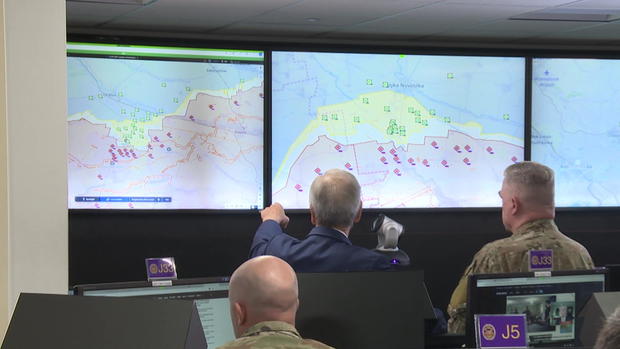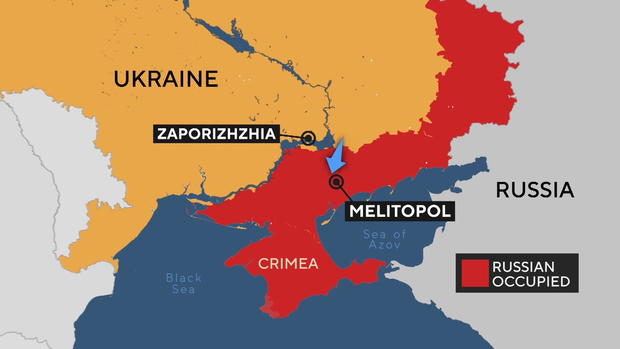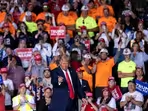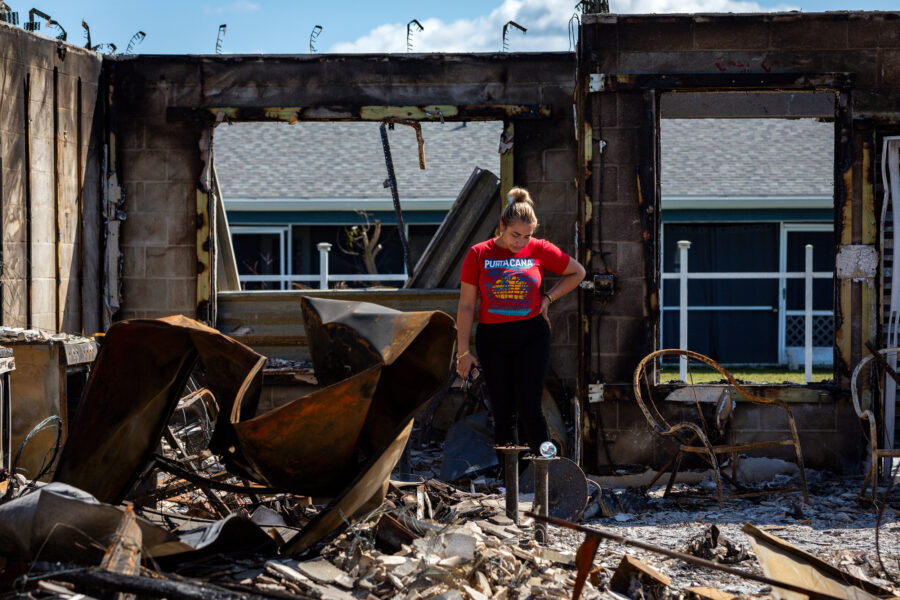Gen. Mark Milley on seeing through the fog of war in Ukraine
No other American has been more deeply involved in the war in Ukraine than General Mark Milley, chairman of the Joint Chiefs of Staff. At 6:45 in the morning, he was about to have a call with Gen. Valery Zaluzhny, commander of Ukraine's armed forces. "I talk to him every week, sometimes twice a week, three times a week," Milley said.
Three hours later, he took "Sunday Morning" underground, deep in the bowels of the Pentagon, into a top-secret command center where all the intelligence collected from the battlefields of Ukraine is monitored by his staff, who inform him on a day-to-day basis what's happening in the current operations. Milley said, "The fog and friction of war is always present, but our information systems are pretty good."

Since the war began, this center has kept a 24/7 watch on Russia's catastrophic invasion – indiscriminate strikes against cities, and the leveling of entire villages without letup. According to the latest casualty estimates, Ukraine has lost 200,000 soldiers killed or wounded, and Russia a staggering 300,000.
Martin asked, "You've seen your share of combat. Have you ever seen combat like this?"
"No," Milley replied. "I've been in a lot of firefights. I've been blown up several times in vehicles – mines and IEDs and RPGs. But never to this degree of intensity."
For the last 100 days Ukrainian troops have been firing artillery at what U.S. officials say is an unsustainable rate as they try to break through Russian frontlines. The Ukrainian offensive, which Milley helped plan, is running into stiffer-than-expected resistance. "It's going slower than people anticipated, [from] the war games that were done where we help them do their war gaming and planning," he said. "But that's the difference between war on paper and real war. So, this is real people getting really killed and real vehicles are really blowing up, so people tend to slow down in situations like that. But it's very deliberate, and they're making progress every day."
Martin asked, "If they're taking so many casualties, how much more slow and deliberate progress can they stand?"
"Your question is, how long will the political will of the Ukrainian people withstand this level of carnage? And the same applies to Russia, by the way. That's an unknown answer."
Maps on screens in the command center (showing unclassified information, because of "Sunday Morning"'s presence) track the painful progress of the offensive – Ukrainians cutting into Russian lines, which are defended with minefields, trenches, ditches, barbed wire, "dragon's teeth" anti-tank fortifications, and small 10- or 12-man hunter-killer teams armed with anti-tank munitions.
The U.S. advertises the $44 billion in military equipment it has committed to Ukraine, but says very little about the equally valuable intelligence.
When asked if the U.S. shares with Ukraine what it knows about Russian troop movements, Milley replied, "Our intelligence pipes to Ukraine are quite open, for sure. And of course, the CIA and interagency, NSA, all those guys … There's pretty open pipes on intel to Ukraine."
"Are you helping Ukraine select targets?" Martin asked.
"Target selection and authority to strike is with Ukraine," Milley said. "What we do is provide them situational awareness."
"But you tell them, 'There's a command post over there. There's an ammunition dump over there'?"
"We'll give them the situational awareness as best we can tell."
- Switchblade drone: How the "kamikaze" anti-tank weapon works
- How HIMARS launchers are shifting momentum in Ukraine's fight against Russia
- With new weapons, Ukraine goes on the offensive
Martin said, "This really is a proxy war. You don't have boots on the ground, you're not making decisions, but you're helping Ukraine kill Russians."
"We're helping Ukraine defend themselves, is what we're doing," Milley replied.
The Ukrainian goal is to reach the crossroads city of Melitopol, where they would be in a position to cut Russian-occupied territory in two.

And with the end of summer comes more challenging conditions, when seasonal rains arrive in October. Milley said, "It won't be the winter; it'll be the rains that make the ground soft and make it unacceptable for ground maneuvers."
Ukraine President Zelenskyy has said he will keep fighting until all of the territory Russia now occupies is liberated. That, said Milley, is no small area: "That area roughly speaking is about the eastern theater of war of the American Civil War. That goes from basically Washington D.C. to Atlanta, and that is a very large piece of ground. So, they've got a tough fight ahead of 'em. It's not over."
Martin asked, "And if they don't achieve their objectives, does that mean we're into a forever war?"
"So, neither side at this point in time have achieved their political objectives through military means," Milley said, "and the war will continue until one side or the other has achieved those means, or both sides have determined it's time to go to a negotiating table [because] they can't achieve their objectives through military means.
"And that time is not yet."
For more info:
- General Mark A. Milley, Chairman of the Joint Chiefs of Staff
Story produced by Mary Walsh. Editor: Ed Givnish.
See also:
- Wagner uprising "most significant threat" Putin has faced
- Life in Ukraine after a year of war
- The war in Ukraine: Convincing Putin he holds a losing hand
- Breaking through Russia's digital Iron Curtain
- Gallery: Haunting photographs of Ukrainian refugees
- In:
- Pentagon
- Mark Milley
- Ukraine
David Martin is CBS News' National Security Correspondent.
Disclaimer: The copyright of this article belongs to the original author. Reposting this article is solely for the purpose of information dissemination and does not constitute any investment advice. If there is any infringement, please contact us immediately. We will make corrections or deletions as necessary. Thank you.
Title:Gen. Mark Milley on seeing through the fog of war in Ukraine
Url:https://www.investsfocus.com









